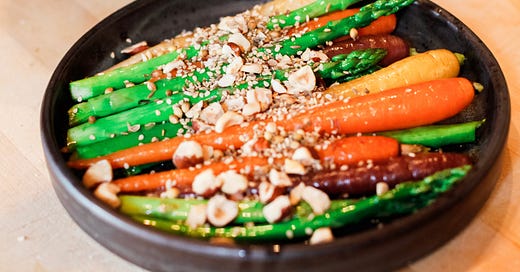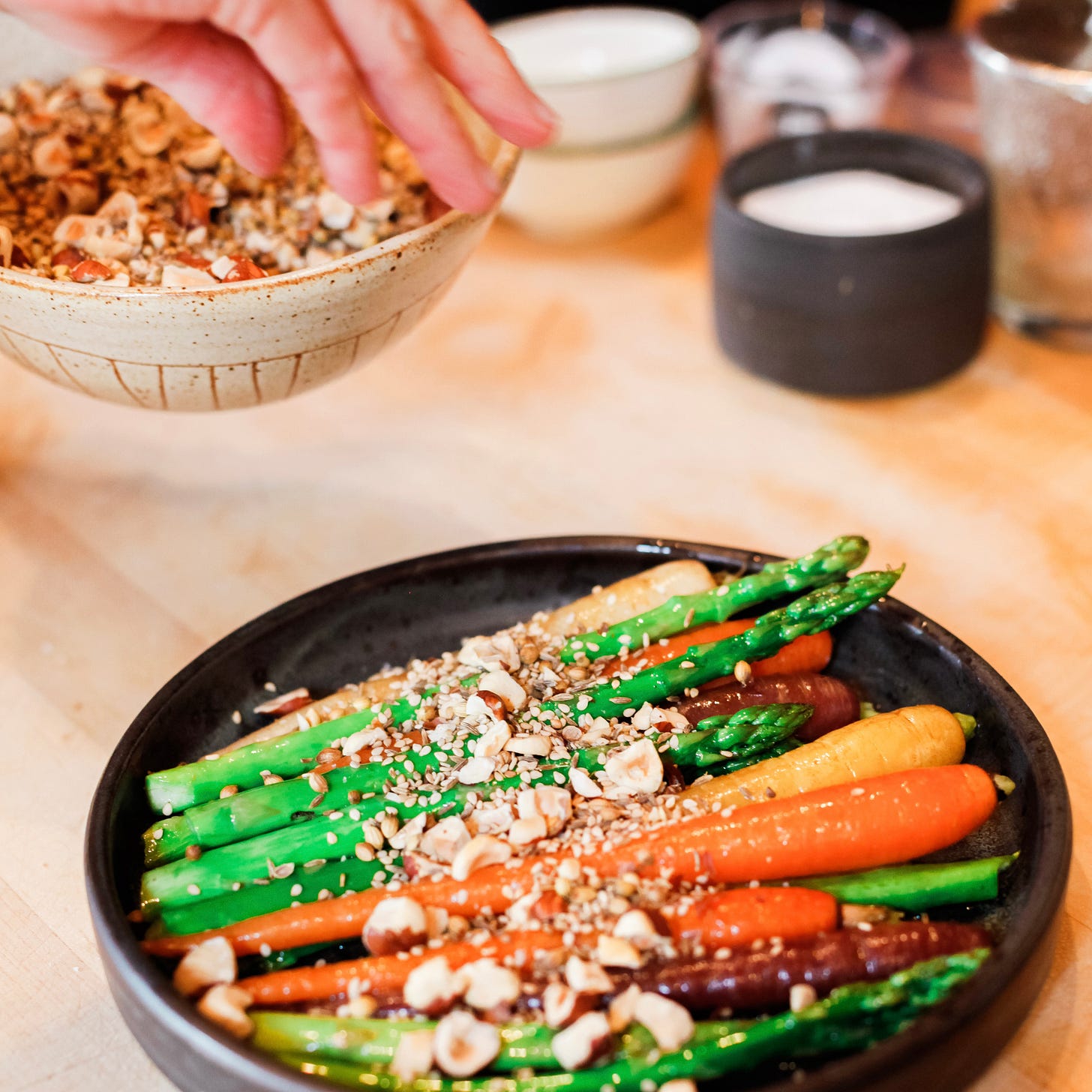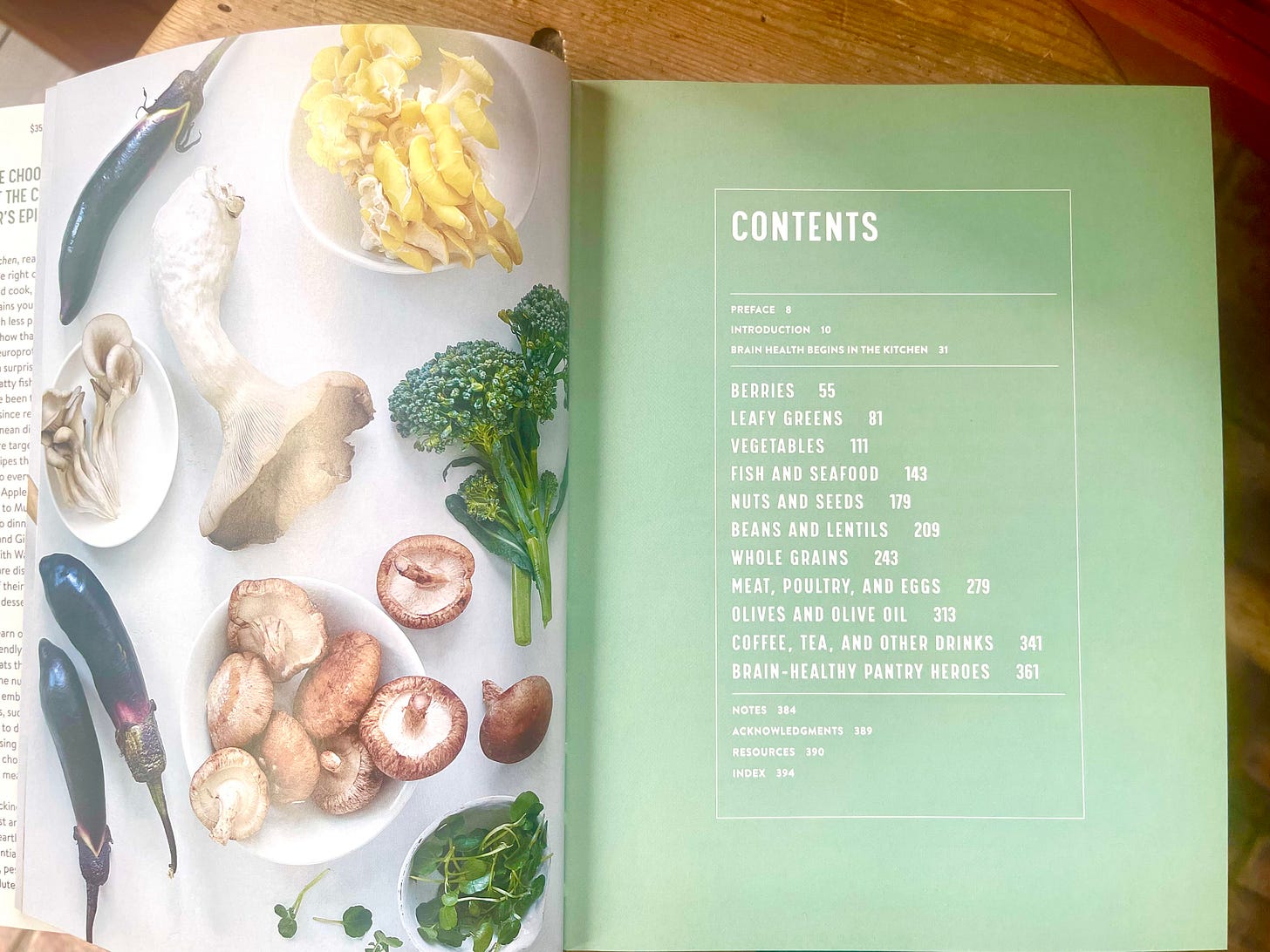Eat More Seeds For Better Brain Health
These tiny plants are a bonus Brain Healthy Food Group. Plus, my DIY recipe for Everything But The Bagel Spice Mix.
Hello, everyone. I hope your summer is off to a great start. This week we are celebrating our dog Olive Oyl’s birthday. I can’t believe Livvie, as we call her, is four. It seems like yesterday that we brought her home, and I got it in my head that she should be named after a brain healthy food. After all, our pudelpointer Orzo (the Italian word for barley) was already named after a whole grain. I’ll probably name our next puppy after one of my favorite foods from the Nuts and Seeds chapter of my book. Hazelnut is a top contender, but I also like the sound of Pepita, also known as pumpkin seed. Today we are talking about seeds—those tiny plants that pack in an impressive amount of brain health nutrients.
This Month’s Brain Health Homework: Eat More Seeds
You may be surprised to learn that one-quarter cup of hemp seeds, for example, provides 10 grams of protein. Chia seeds are the richest plant source of omega-3s. And, that a small handful of pumpkin seeds (¼ cup; 30 grams) gives you 10 grams of protein, 2 grams of fiber, and more than half the recommended daily allowance of zinc and magnesium.
So for this month’s brain health homework, I want to encourage you to eat more seeds. Shoot for using 3 or more types of seeds each week in new and different ways. This could mean finishing your avocado toast with a generous sprinkle of pumpkin seeds, making a salad dressing from tahini (a sesame seed butter), or boosting your smoothie with hemp seeds.
If you’re new here, Brain Health Homework is a regular feature of the newsletter. Every so often, I give you a discrete facet of brain health to focus on. If you missed it, the last one was about checking your blood pressure. Back in March, I asked you to examine your relationship with cheese.
Below, I give you more ideas for folding seeds into your eating pattern. But first, let’s take a closer look at why these tiny plants are so good for you and your brain.
Nuts Are a Brain Healthy Food Group in the MIND Diet Study. Here’s Why I Added Seeds
If you are familiar with my book, you know it’s not organized like a typical cookbook. Instead of chapters for categories like appetizers and desserts, there’s a chapter for each of the 10 brain healthy food groups described in the MIND diet study—berries, leafy greens, vegetables, fish and seafood, whole grains, nuts (and seeds), beans and legumes, poultry (meat, and eggs), olive oil, and drinks. The idea was to encourage you to enjoy eating from all these food groups. And, of course, to help you build a diverse diet that hits all the most neuroprotective foods.
While the BHK Food Guidelines are based on the MIND diet, I changed a few food groups to reflect the latest research. Eggs, for example, were not mentioned at all in the MIND diet study, a source of confusion for many. There are some real brain health advantages to eating eggs, so I included them in the chapter with poultry and meat. Red wine earned a spot in the MIND diet guidelines, but I dropped it as a brain healthy food based on the latest research, which I wrote about here.
Nuts snagged a spot in the MIND diet’s brain-healthy food groups based on research showing reduced risks of heart attack and stroke. (As I wrote about here: What’s Good For the Heart is Good For the Brain.) While seeds provide the same brain-friendly monounsaturated and omega-3 fats found in nuts, they haven’t been studied as rigorously regarding their long-term benefits. Here’s why I opted to include them as bonus brain healthy food group:
Nut allergies. Adding seeds gives people who are allergic or sensitive to nuts a food group with a similar brain health profile.
Flavonoids. Seeds are brimming with bioactives that work to protect the memory center of the brain.
Fiber. Seeds provide a good dose of fiber, important for numerous brain health reasons I wrote about here.
Protein. Seeds are tiny protein heroes! At about 10 grams per 1/4 cup, pumpkin and hemp seeds have the most. But even chia, sesame, sunflower, and flaxseeds give you 5 grams of protein in 2 tablespoons.
Diversity. Seeds add to the diversity of a plant-based diet, which in turn helps you cultivate robust populations of gut microbiota.
Fun! Seeds boost more than nutrition; they add color, crunch, creaminess, texture, and unique flavors to many foods from breakfast to dinner.






